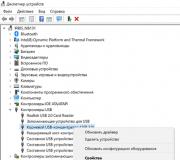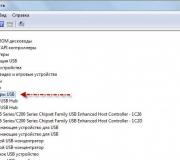Java application won't start. Basic Java Troubleshooting Tips
Chrome browser versions 42 and above. Starting with Chrome version 42 (released April 2015), Chrome has disabled the standard way in which browsers support plugins. More info
Download and Install Java
Try the offline installer package (Windows only)
The offline installer package will often complete successfully even though the online installer package has encountered a problem. The offline installer package file is large and will take longer to download than the online installer.
» Download the Windows Offline installer
Uninstall any non-working Java installations
Remove prior installations of Java that are not working before trying to install again.
» Uninstall Java for Windows
» Uninstall Java for Mac
Temporarily turn off firewall or antivirus clients
Active firewall or antivirus software may prevent Java from installing properly. Remember to turn your firewall or antivirus software back on when you have successfully completed the Java install.
Why do I get file corrupt message during Java installation?
This message is most commonly seen by Windows XP users. Running a Microsoft utility and trying the offline installer may resolve the issue. See the installshield FAQ for more details.
You can test your Java installation using the instructions in the section below.
UseJava
Once you have determined that Java is installed correctly, try the following items to help you run a particular Java application.
Restart your browser after installing Java to enable the new version
If you are still prompted to update Java after installing the latest version, try restarting your browser. close all of the browser windows, then reopen any web pages that require Java. In most cases starting a new browser session should make the latest installed version of Java active in your browser.
note: If you are still prompted to update, try restarting your system. Some systems need a restart to register the newly installed Java plugin.
Give permission to run Java, when prompted by the browser
Browsers will ask for your permission to run the Java plug-in in the browser. The permission prompts vary according to the browser.
» Activate Java plug-in in the browser
Check if the Java plug-in is enabled in the browser
Browsers may disable the Java plug-in or related add-ons by default. You may need to configure your browser to enable the Java plug-in.
» Enable Java plug-in in the browser
Verify that Java is enabled in the Java Control panel
If Java is not enabled in the Java control panel, you will be unable to run Java applications in any browser.
» Enable Java content in the browser using the Java Control panel
Configure security settings
Ensure that the Java security level is not preventing the application from running. The default security level may restrict the ability to run applications that may present a risk to your computer.
» Configure security level settings in the Java Control panel
How can I run the applications blocked by Security settings?
The Exception Site List feature was introduced starting with the Java 7 Update 51 release. Adding the application URL to the Exception list allows users to run Rich Internet Applications (RIAs) that would normally be blocked by security checks.
» Configure the Exception Site List
Why am I unable to print coupons or shipping labels?
Some Java applications have not been upgraded to meet new Java security standards. As a result, these apps are blocked thus disabling printing. Contact the website or application developer to notify them of the issue.
» Printing issues FAQ
Clear the Java cache (temporary) files
Sometimes a corrupted file in the Java cache can prevent an application from running. You can safely delete the temporary files that Java downloads since Java will download them again and ensure they are up-to-date.
» Clear Java cache
Check Antivirus or Firewall settings related to Java
Users should check with antivirus security apps and also firewall settings to see if there are areas to configure Java plugins and if they could add trusted sites.
Verify proxy settings
Ensure that you are using the appropriate proxy settings if they are necessary for your particular internet configuration.
» Set proxy settings in the Java Control panel
Uninstall stand-alone JavaFX installations in Firefox (Windows)
A conflict between Java versions 7u10 and above and previous standalone installations of JavaFX can cause Firefox to not recognize installed Java versions.
» See Firefox issues
test java
Ensure that Java is enabled in your browser
Once the Java installation has completed, you can verify that Java is working in your browser. It is possible that Java has been disabled or blocked from running in your browser. How you give permission to run Java varies according to the browser being used.
Java is not the most popular browser plugin today Mozilla Firefox, which is required for the correct display of Java content on the Internet (which, by the way, is practically gone). V this case we will talk about the problem when Java does not work in the Mozilla Firefox browser.
Java plugins and Adobe Flash Player are the most problematic plugins for Mozilla Firefox, which most often refuse to function in the browser. Below we will consider the main reasons that may affect the performance of the plugin.
Reason 1: The browser is blocking the plugin
The Java plugin is known not from the very positive side, since its presence in the browser seriously undermines the security of the web browser and the computer as a whole. In this regard, relatively recently, Mozilla developers began to block the functioning of Java in their web browser.
First, let's check if Java is enabled at all in Mozilla Firefox. To do this, click on the browser menu button and go to the section "Additions" .

In the left area of the window, go to the tab "Plugins" . Make sure you're to the right of Java plugin parameter inserted "Always On" . If necessary, make the necessary changes, and then close the plugin management window.

Reason 2: Outdated version of Java
Java problems can be caused by the fact that an outdated version of the plugin is installed on your computer. In this case, if you still have not been able to solve the problem with the performance of the plugin, you should check it for updates.
To do this, open the menu "Control Panel" and then open the section Java .

In the window that opens, go to the tab "Update" and then click the button "Update now" .

The system will start checking for updates. In the event that your Java version will need to be updated, you will be prompted to install the update. Otherwise, a message will appear on the screen indicating that you have the latest version installed on your computer. software.

Reason 3: Incorrect plugin operation
The next way to troubleshoot Java work- it complete reinstallation software. implying complete removal, we recommend that you uninstall the program without in a standard way through the "Control Panel" - "Uninstall Programs", and using a special Revo utilities Uninstaller, which will allow you to really completely remove Java from your computer by detecting absolutely all the files of this software remaining in the system.
Run Revo program uninstaller. Make sure you need administrator rights to run it.
Find in the list of installed Java programs, click on it right click mouse and select "Delete" .

To begin with, Revo Uninstaller will launch the plugin's built-in uninstaller, which will allow you to uninstall Java first in the standard way.

Once the uninstall is complete, Revo Uninstaller will prompt you to scan for any remaining Java-related files. We recommend that you set the advanced scanning mode, and then start the procedure by clicking on the button "Scan" .

The scanning procedure will start and take some time. Once it is completed, the screen will display the search results first in system registry. Please note that it is tedious to delete only those keys that are highlighted in bold.

Moving on, the remaining folders and files will be displayed on the screen. Scroll through the list and highlight the folders that you want to delete. To select all folders, click the Select All button. Complete the procedure by clicking on the button "Delete" .

After completing the uninstall process, restart your computer to changes made were finally accepted by the system. After its completion, you can start downloading a fresh distribution from the official website of the developer.
Download the downloaded distribution and install Java on your computer. Restart Mozilla Firefox for the plugin to start working in the browser.
Reason 4: Reinstalling Firefox
If reinstalling Java still doesn't work, then a full reinstall will probably solve the problem. Mozilla browser firefox way, which is described above.
Having finished uninstall firefox, be sure to restart your computer, and then download the latest version of the distribution from the official website of the developer.
Please note that Mozilla Firefox is gradually phasing out Java support, in connection with which at any time none of the methods described in the article will be able to help you, because suddenly the browser will not support working with this plugin.
People who just installed a new one operating system on your computer or laptop, they often encounter a message on the Internet like “You need to install Java to work correctly.” Inexperienced users can be terrified and confused by this message. But don't panic, you've come to the right place. This article will discuss in detail the question of why the presented software is needed, and what to do if Java is not installed. Will also be posted detailed instructions installation instructions for both Windows users and Linux Ubuntu "users".
What is Java?
The message about the need to install software is most often encountered by people who have recently installed a new operating system. It appears on the Internet when you try to open a page or launch an application. From this we can conclude that it is necessary to run programs written in this language. Yes! Java is a programming language and it's everywhere. Nowadays, almost all sites use this language in their code, and by the way, it was created back in 1995 and there are still no analogues of its level. This is because it is constantly being updated and improved. Because of which, in turn, he is the best in terms of information processing speed, he has incredibly reliable protection and is very reliable.
This language is used not only in personal computers, it is ubiquitous. It has also been used in game consoles and in supercomputers. Therefore, its necessity becomes clear.
So, we figured out the concept, now we need to move on to the main question - what to do if Java is not installed?
Java is not installed on Windows
If you do not have Java software on Windows, then you urgently need to install it. You can do this by visiting the official website of the application. But it also happens that you downloaded a program, and for some reason it refuses to be installed on your PC. Now we will analyze the reasons and tell you what to do if Java is not installed on Windows 7.

So, let's look at a common problem. The fact is that Java is downloaded from the official site in the form of a web installer. That is, after this download and and opening downloaded file launcher via connection to and upload to the Internet necessary files and put them in library, according to Why Java will work. But this is an optimistic scenario, it happens that antiviruses block the download and installation of a program, believing that the action being performed threatens the system. There are two ways out of this situation. The first involves disabling all antiviruses. The second one is more trivial, you can just download an offline installer from the site. Its size is about 50 MB.
It may also be that the installation new version Java interferes with the previous one. To solve this problem, go through the control panel to "Programs and Features", and there in the list find Java and remove it, then repeat the installation.
In rare cases, viruses can do harm, so download an antivirus if you don't have one and check for them.
Registry errors can also block Java installation, so download Cclaner or any similar program and clean your registry.
If none of the methods helped, visit the Java folder, which is located along the path drive C - ProgrammFiles - Java, and delete all the files clean.
And in extreme cases, enter the "Windows Update" and update the operating system. Sometimes it helps.
Now you know what to do on Windows if Java is not installed. As you can see, there are a lot of options.
How to install Java on Ubuntu?
Now we will talk about how Java is installed on the Ubuntu operating system.Will be considered various methods. Linux users are well aware that installation is different on almost all distributions. s Programs can proceed in several ways. So that everyone finds his own, we will cover them all.
Manual installation of Java
The first method presented is for users of GNU-based distributions.


Software Java software used as a platform for many Windows programs and is a recognized standard for development various applications and games. It provides a lot of opportunities for the programmer, and users have to pay for this in the form of the need to install Java libraries or even Java Virtual Machine on a computer or laptop. And it would be fine if everything went “without a hitch”, but very often the JAVA software is not installed and an installation error is generated. What to do and how to install it successfully in Windows system? Here are some tips.
1. Usually, when downloading software from the official site, you download a special web installer, which will then pull itself required libraries through an Internet connection. But here it can include an antivirus or firewall in the game, which can regard this as a viral activity and block access to the Internet. installation application. Therefore, try downloading a full-fledged offline installer from here - link, and then try installing Java through it. Do not be surprised that it weighs about 50 megabytes, while the web installer is almost 50 times smaller. This is fine.
2. If you already had more than old version Java - try uninstalling it and reinstalling it through the Windows Control Panel.

3. Check your Windows 7, 8 or 10 operating system with a good antivirus program. For instance, DrWeb CureIt or kaspersky antivirus . Often malware disguised as system libraries and then do not allow them to be updated.
4. Clean the Windows registry using a special utility. For instance, CCleaner.

Registry errors are often the reason why Java software is not installed on a computer.
5. Try to clean system folders:
C:\Program Files\Java
and
C:\ProgramFiles\Common Files\Java
Sometimes files left over from older versions cause Java installation to fail.
6. Try updating Windows components using the Update Center. It may happen that the error Java installations Runtime Environment occurs even due to an outdated version of Internet Explorer.
7. Download the fix file with fixes and apply the changes in the registry.
Chrome browser versions 42 and above. Starting with Chrome version 42 (released April 2015), Chrome has disabled the standard way in which browsers support plugins. More info
Download and Install Java
Try the offline installer package (Windows only)
The offline installer package will often complete successfully even though the online installer package has encountered a problem. The offline installer package file is large and will take longer to download than the online installer.
» Download the Windows Offline installer
Uninstall any non-working Java installations
Remove prior installations of Java that are not working before trying to install again.
» Uninstall Java for Windows
» Uninstall Java for Mac
Temporarily turn off firewall or antivirus clients
Active firewall or antivirus software may prevent Java from installing properly. Remember to turn your firewall or antivirus software back on when you have successfully completed the Java install.
Why do I get file corrupt message during Java installation?
This message is most commonly seen by Windows XP users. Running a Microsoft utility and trying the offline installer may resolve the issue. See the installshield FAQ for more details.
You can test your Java installation using the instructions in the section below.
UseJava
Once you have determined that Java is installed correctly, try the following items to help you run a particular Java application.
Restart your browser after installing Java to enable the new version
If you are still prompted to update Java after installing the latest version, try restarting your browser. Close all of the browser windows, then reopen any web pages that require Java. In most cases starting a new browser session should make the latest installed version of Java active in your browser.
note: If you are still prompted to update, try restarting your system. Some systems need a restart to register the newly installed Java plugin.
Give permission to run Java, when prompted by the browser
Browsers will ask for your permission to run the Java plug-in in the browser. The permission prompts vary according to the browser.
» Activate Java plug-in in the browser
Check if the Java plug-in is enabled in the browser
Browsers may disable the Java plug-in or related add-ons by default. You may need to configure your browser to enable the Java plug-in.
» Enable Java plug-in in the browser
Verify that Java is enabled in the Java Control panel
If Java is not enabled in the Java Control Panel, you will be unable to run Java applications in any browser.
» Enable Java content in the browser using the Java Control panel
Configure security settings
Ensure that the Java security level is not preventing the application from running. The default security level may restrict the ability to run applications that may present a risk to your computer.
» Configure security level settings in the Java Control panel
How can I run the applications blocked by Security settings?
The Exception Site List feature was introduced starting with the Java 7 Update 51 release. Adding the application URL to the Exception list allows users to run Rich Internet Applications (RIAs) that would normally be blocked by security checks.
» Configure the Exception Site List
Why am I unable to print coupons or shipping labels?
Some Java applications have not been upgraded to meet new Java security standards. As a result, these apps are blocked thus disabling printing. Contact the website or application developer to notify them of the issue.
» Printing issues FAQ
Clear the Java cache (temporary) files
Sometimes a corrupted file in the Java cache can prevent an application from running. You can safely delete the temporary files that Java downloads since Java will download them again and ensure they are up-to-date.
» Clear Java cache
Check Antivirus or Firewall settings related to Java
Users should check with antivirus security apps and also firewall settings to see if there are areas to configure Java plugins and if they could add trusted sites.
Verify proxy settings
Ensure that you are using the appropriate proxy settings if they are necessary for your particular internet configuration.
» Set proxy settings in the Java Control panel
Uninstall stand-alone JavaFX installations in Firefox (Windows)
A conflict between Java versions 7u10 and above and previous standalone installations of JavaFX can cause Firefox to not recognize installed Java versions.
» See Firefox issues
test java
Ensure that Java is enabled in your browser
Once the Java installation has completed, you can verify that Java is working in your browser. It is possible that Java has been disabled or blocked from running in your browser. How you give permission to run Java varies according to the browser being used.



